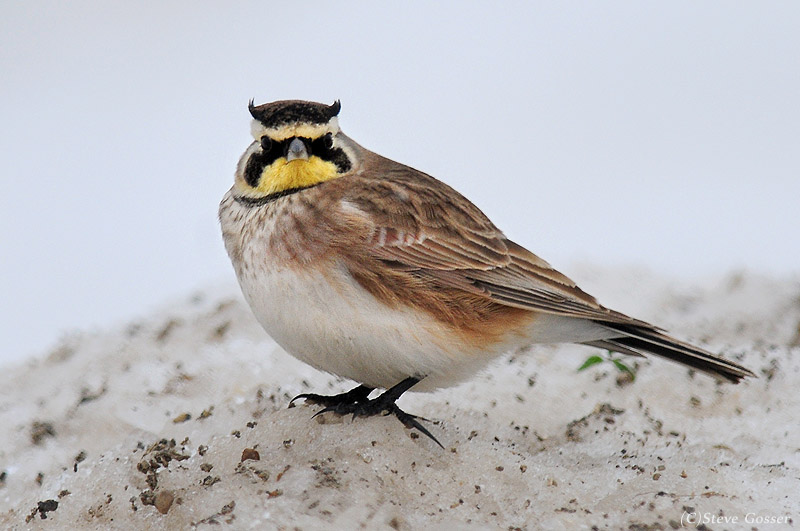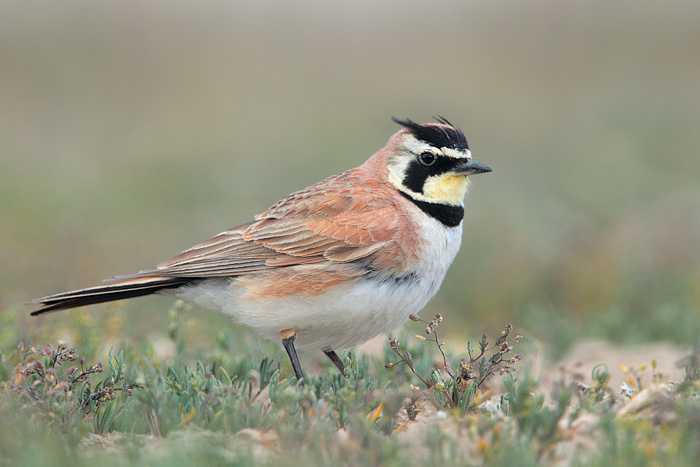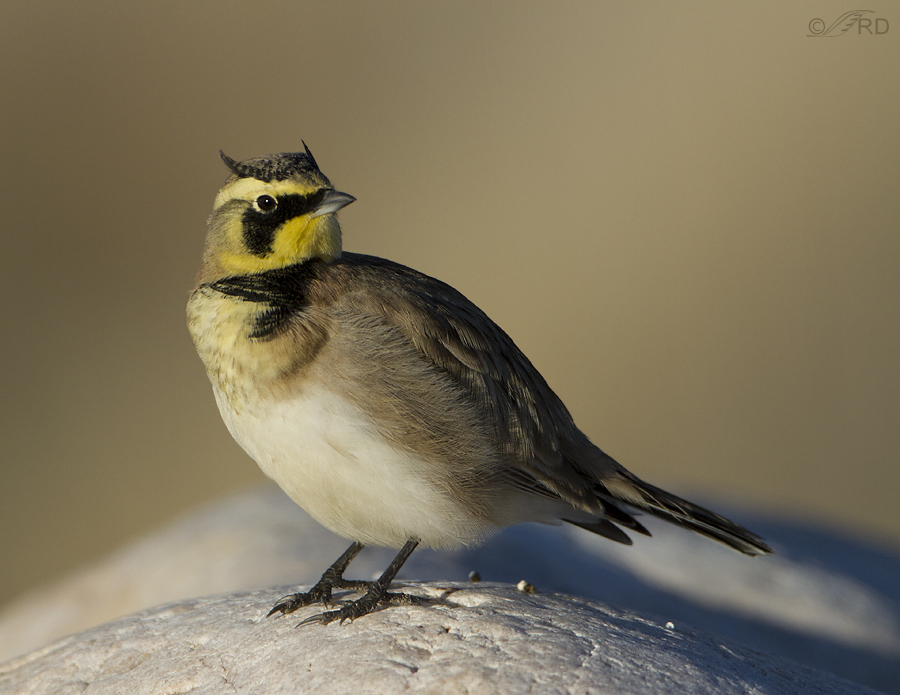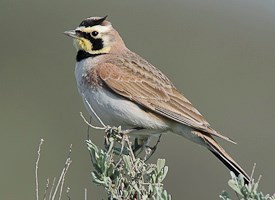
Eremophila alpestris
TAXONOMY
Alauda alpestris Linnaeus, 1758, North America = coast of
North Carolina.
OTHER COMMON NAMES
English: Shore lark; French: Alouette hausse-col; German:
Ohrenlerche; Spanish: Alauda Cornuda.
PHYSICAL CHARACTERISTICS
5.9–6.7 in (15–17 cm); male 1.1–1.7 oz (30–48 g); female
0.9–1.5 oz (26–42 g). Named after elongated black feathers at
sides of crown reminiscent of horns; head and breast contrastingly
colored, somewhat brighter in males than in females.
DISTRIBUTION
Holarctic; widespread in North America, northern and southeastern
Europe, northern and central Asia. Separated populations
in Morocco, Lebanon, northern Israel, and South
America (Colombia).
HABITAT
Steppes, semideserts, arctic tundra; prefers open, bare, and
stony areas.
BEHAVIOR
Perches on stones, fence posts, or shrubs. Song uttered while
perching and during song-flight up to 300 ft (91 m) above
ground. Populations of arctic tundra are migratory, hibernate
between 55° and 35° N. Present year round in most areas in
North America, from southern Canada southward; some may
be permanent residents. Migratory in far north, one of the earliest
spring migrants. Horned larks breeding in Alaska and
Canada winter south as far as the Gulf of Mexico; populations
from the tundras of Northern Europe migrate annually to wintering
areas around the North Sea.
FEEDING ECOLOGY AND DIET
Feeds mainly on insects during breeding season, but takes
more seeds during winter months.
REPRODUCTIVE BIOLOGY
Monogamous. Nest cup-shaped, frequently surrounded with
pebbles. Breeds March through July; one to two broods; three
to five eggs, incubation takes 13 days; chicks leave nest after
eight to 10 days. Both parents care for young.
CONSERVATION STATUS
Not threatened.
SIGNIFICANCE TO HUMANS
None known.
Photo Gallery of - Horned lark




 Animalia Life
Animalia Life